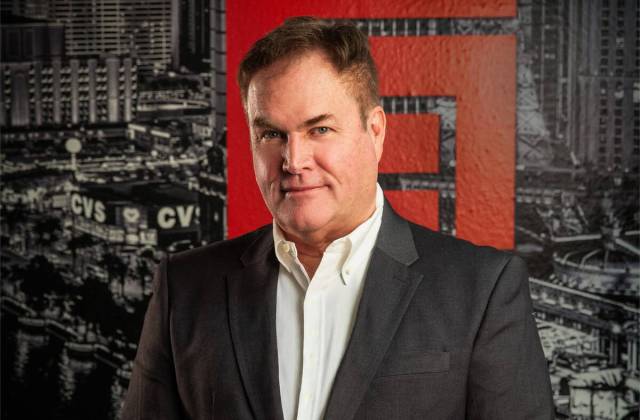
As a veteran of the resort industry with over 50 years of experience designing and living in Las Vegas, I’ve witnessed the city’s highs and lows firsthand. From the neon lights of the Strip to the resilience of its residents, Las Vegas has always reinvented itself. Yet doomsayers regularly proclaim the end of our tourism-driven economy. Drawing from Mark Twain’s quip “The reports of my death are greatly exaggerated,” I can confidently say the same about Sin City.
Through four recessions, multiple stock market crashes, and the unprecedented COVID-19 shutdowns, I’ve heard the same predictions: Tourism will dry up, visitors will flee and the city will fade. Each time, Las Vegas not only survived but thrived, emerging stronger and more innovative.
Let me take you back to a crisp morning in 1997, just before The Mirage opened. I stood with the general contractor, an owner’s representative and the principal engineer. As we admired the volcano fountain and atrium, one remarked: “Take a good look. This will be the last grand hotel ever built in Las Vegas.” The sentiment was echoed by many experts convinced that the era of mega-resorts had peaked.
Yet nearly three decades later, more than 10 monumental properties have risen, from Bellagio’s fountains to the Sphere’s immersive wonders. Still, pundits recycle the same narrative. Headlines now cite a dip in visitor numbers as proof of collapse. After half a century here, I know better. These rumors are just the latest chapter in a long story of underestimated resilience.
ADDRESSING THE CURRENT HEADWINDS
It’s true visitor numbers have slowed, driven by rising prices for food, entertainment and hotel rooms. A $20 cocktail or $300 show ticket can quickly add up, deterring budget-conscious families and casual gamblers who once came for affordable thrills. Economic uncertainty like tariffs, inflation and political shifts adds pressure. And in the age of remote work and virtual entertainment, some question whether the trek to the desert is worth it.
Headlines and photos on Lake Mead’s receding waters add fuel to the fire. Photos of cracked earth and exposed shorelines suggest a parched, unsustainable destination. “Why visit a city when the tap is turned off,” they ask. But they overlook the proactive measures we have all taken to conserve our most precious resource.
THE REALITY: WHY LAS VEGAS REMAINS A SAFE BET
There are hundreds of reasons to bet on our city’s comeback. Here are my top three:
1. SPORTS AS A NEW ANCHOR
Las Vegas is solidifying its status as a sports capital, with professional baseball and basketball teams calling Las Vegas home within three years. The Oakland Athletics’ relocation to a Strip stadium is underway, and NBA expansion talks point here as well. These join the Raiders, Golden Knights and Aces in drawing fans year-round. Sports tourism injects billions into local businesses, fueling hotels, restaurants, retail and transportation. We are able to diversify beyond gambling and entertainment while attracting younger, affluent travelers. Allegiant Stadium transformed the landscape. New franchises will do the same.
WATER WISDOM
The alarming photos of Lake Mead tell only part of the story. Las Vegas is in fact among the nation’s most water-conservative cities in the country. We use far less of our share from the Colorado River than our counterparts and recycle about 75 percent of wastewater. Initiatives like turf removal rebates and strict conservation mandates have cut per-person water use by over 40 percent since 2002. As a designer in the resort industry, I’ve incorporated the principles by integrating low-flow fixtures and desert landscaping, among many other water-saving designs. Sustainability is both environmental stewardship and smart business. By proving our sustainability, Las Vegas is a model for resilience in a climate-conscious era.
ONGOING REINVENTION
Las Vegas has never been static. We are constantly retooling and evolving to meet new demands. In the next two years alone, four mega-resorts will break ground, creating jobs and redefining luxury with integrated entertainment and sustainable features. Existing properties also are evolving, with renewed emphasis on value-driven service, dining packages and loyalty perks. We’re seeing a deliberate shift back to high-service and “good deal” concepts like complimentary upgrades, dining packages and loyalty perks that echo our golden era of affordability. By blending nostalgia with novelty, Las Vegas ensures it remains relevant, creating new opportunities for growth.
LOOKING AHEAD
In my half century in Las Vegas, I’ve learned that our strength lies in our ability to pivot. The current challenges are real, but echoes of storms we’ve weathered before. With sports expansion, water-smart policies and transformative projects ahead, the city is poised for another boom.
To the skeptics, I say: Take a good look at Las Vegas today. The rumors of its demise are, once again, greatly exaggerated. This desert gem will keep shining.
Robert P. Finnegan, PE, is president and owner of FEA Las Vegas, one of the country’s top hospitality engineering firms. He has been involved in the mechanical, electrical, plumbing and low-voltage engineering for some of Las Vegas’ most iconic destinations including Circa, Hard Rock Las Vegas, Resorts World Las Vegas and Formula 1 Las Vegas. He has been part of the creation of more than 250,000 guest rooms and 1 million square feet of hospitality and convention space. For more information visit fealasvegas.com.